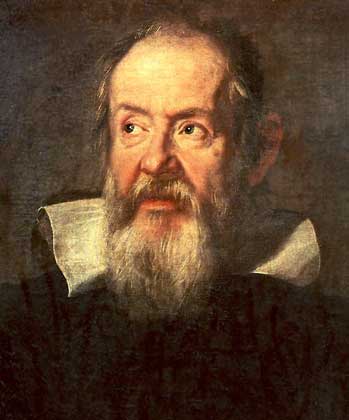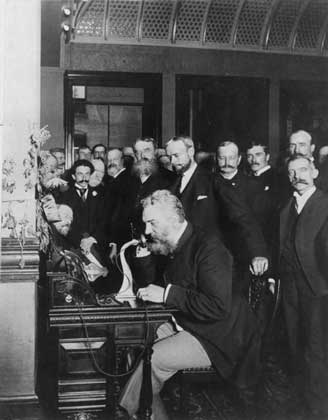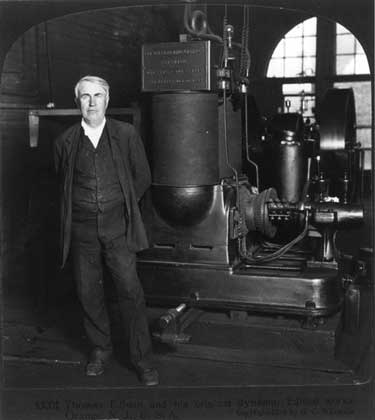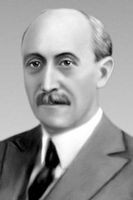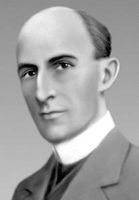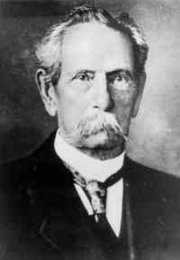Методические указания для студентов первого курса всех технических специальностей новосибирск 2008 ббк 81. 432. 1923 а 647
 Скачать 6.49 Mb. Скачать 6.49 Mb.
|
|
2.3. Имена многих людей стали известными, благодаря их достижениям. Прочитайте слова и выберите те, что ассоциируются с именем Альфреда Нобеля. Составьте предложения, подтверждающие ваш выбор, используя фразы: In my opinion … I think …. As I know … It’s known that … Sholokhov Russia mining contrast Germany peace literature Sweden money steam millionaire penicillin radium dynamite radio 2.4. Прочитайте текст и выясните, правы ли вы. Alfred Nobel – a Man of Contrasts. Alfred Nobel, the great Swedish inventor, was a man of many contrasts. He was a son of a bankrupt, but became a millionaire. He was a scientist with love of literature and industrialist who was able to remain an idealist. He made a fortune1 but lived a simple life. Cheerful in company he was often sad when he remained alone. A lover of mankind, he never had a wife or a family to love him. He invented a new explosive2, dynamite, to improve the peacetime industries. However, it was used as a weapon of war. A patriotic son of his native land, he died in a foreign country. He was born in Stockholm on October 21, 1833, but moved to Russia with his parents in 1842. His father Emmanuel made there a strong position for himself in the engineering industry. Emmanuel invented the landmine3 and got plenty of money for it from government during the Crimean War, but then went bankrupt. Most of the family went back to Sweden in 1859.Four years later Alfred returned back too and began his own study of explosives in his father’s laboratory. He had never been to school or university but had studied privately. By the time when he was twenty he was a skilful chemist and an excellent linguist. Like his father, Alfred was imaginative and inventive, but he had better luck in business. He was never really concerned with making money or scientific discoveries. He never expected any reward4 for what he had done. He was always searching for a meaning of life. He began to care about the whole mankind. He took every opportunity to help the poor. His greatest wish was to see an end to wars and peace between nations. He spent much time and money working for the cause until his death in Italy in 1896. In his famous will5 Nobel wrote that he had left money to provide prizes for outstanding work in physics, chemistry, physiology, medicine, literature and peace. According to his will the capital was invested to form a fund. The money from this fund can be given to the candidates of any nationality, no matter if it is a Swede or not. Since Nobel’s death many greatest scientists, writers and public figures from different countries have become Nobel Prize winners. Слова к тексту: 1. make a fortune – сколотить состояние 2. explosive – взрывчатый, взрывчатое вещество 3. landmine – воен. фугас 4. reward - награда 5. will – завещание 2.5. Переведите слова, данные в скобках. 1. He invented a new (взрывчатое вещество) to use it for peaceful aims. 2. World famous for his work Nobel never expected (какой-то награды) for what he had done. 3. When A. Nobel returned back to Sweden, he began his (собственное изучение) of explosives. 4. He began (заботиться) about human problems and used every opportunity to help people. 5. He spent much time and money working (ради этой цели) until his death. 6. Alfred Nobel left his money (чтобы обеспечить) prizes for outstanding works in different fields of science and art. 2.6. Образуйте пары антонимов (А,B): А B p  oor to earn oor to earnoften (to become) a millionaire cheerful to leave peace sad plenty of seldom to come back war always never to spend(money) rich (to go) bankrupt to stop to begin native foreign little 2.7. Найдите в каждом ряду синоним для выделенного слова, по образцу: 1-d 1) to wish a) to work b) to go c) to move d) to want 2) plenty of a) much b) little c) enough d) few 3) to make a) to choose b) to do c) to win d) to wish 4) to believe a) to respect b) to deserve c) to consider d) to wish 5) to come back a) to leave b) to return c) to retreat d) to invent 6) to care about a) to use b) to worry c) to provide d) to call about 2.8. Образуйте с помощью союза “but” предложения, которые доказывают, что жизнь великого ученого была полна контрастов, по образцу: to be a millionaire but to live a simple life He was a millionaire but lived a simple life. a  ) to be an industrialist to remain an idealist ) to be an industrialist to remain an idealistb) to be cheerful in company to be sad in private c) to love all mankind not to have a wife or a family to love him d) to invent dynamite to improve to see it used as a weapon to kill peacetime industries people e) to be a patriot of his native to die alone in a foreign country land but f) to be a Swede to live more than 20 years in Russia g) never to study at school to be a skilful chemist and excellent or University linguist h) to be a man of imagination to show great business and financial sense 2.9. Продолжите предложения, выбрав вариант, соответствующий содержанию текста. 1. Alfred Nobel was a son of a a) millionaire. b) bankrupt. c) clerk. 2. He made a fortune but a) spent all his money at restaurants. b) was prisoned. c) lived a simple life. 3. He invented a new explosive, dynamite, a) to kill and injure people. b) to improve peacetime industries. c) to get money (reward) for his invention. 4. He was born in Stockholm a) but moved to Russia in 1842. b) and never left his native city. c) moved to Germany in 1842. 5. His greatest wish was a) to see an end to wars. b) to become famous. c) to earn as much money as possible. 6. According to Nobel’s will the prize is given a) only to Swedish candidates. b) to candidates of any nationality. c) only to a Scandinavian. 2.10. Прочтите текст снова и разделите его на 4 логические части. Выберите для каждой из них заголовок из тех, что предложены ниже. 1. Alfred Nobel’s will. 2. Contrasts and his life. 3. Alfred Nobel – priorities in life. 4. His way of becoming a scientist. 2.11. Ответьте на вопросы по тексту. 1. What kind of person was Alfred Nobel? 2. What was the most famous invention of A. Nobel? 3. Did he live in Sweden for all his life? 4. What did Nobel’s father invent? 5. How did A. Nobel spend his money? 6. What was Nobel’s contribution to development of Science and Art? 2.12. Прочитайте список людей, получивших Нобелевскую премию. За какие достижения присуждалась данная награда? Составьте предложения, используя пассивный залог, по образцу: P. and M. Curie were awarded the Nobel Prize for the discovery of radium. или The Nobel Prize was given to P. and M. Curie for the discovery of radium.
2.13. Составьте диалог по следующей ситуации: St. A is a famous scientist ( he might be any Nobel Prize winner, no matter if he is alive now or not) who is ready to give interview. St. B is a graduate who is interested in scientific research and has an opportunity to interview scientist. Во время беседы выясните следующее: – where and when he/she was born and worked – when and why he/she decided to become a scientist – the field of science the scientist worked in – the discoveries or inventions he/she made – where the results if his/her work are used now 2.14. Прослушайте текст о пяти выдающихся ученых, дополните таблицу недостающими данными. Расскажите о каждом, используя эту информацию. Обсудите ваши ответы в парах.
2.15. Подготовьте проект(презентацию), об одном из выдающихся ученых в области физики, химии, литературы (250-300 слов). Придерживайтесь следующей композии, используя подходящие фразы: 1. Introduction My goal today (now) is to present (to discuss, to inform, to report)… I  am going to … am going to …I would like to … e.g. present information about a famous scientist I am here to … I have divided my report into 3 (4…) parts/section as follows… My report will be in … parts… 2. Main body T  o start with … e.g. some important events from the biography of… o start with … e.g. some important events from the biography of…Let's start with… I  n addition… n addition…Furthemore… I'll move on to … e.g. his/her career of a scientist This is important/necessary because… e.g. his/her invention(s)brough him/her glory It should be noticed/stressed that… 3. Conclusion In conclusion I shall say that… Summing up… It is evident that… Лексический минимум к модулю III Science, Technology and Outstanding People ability (n) advance (n) be interested in be connected with create (v) carry out (v) develop (v) discover (n) discovery (v) explosive (n) explosive (adj) flight (n) invent (v) inventor (n) invention (n) opportunity (n) propery (n) research (n) researcher (n) reward (n) science (n) scientist (n) scientific (adj) science education substance (n) technology (n) technologist(n) Appendix 1 Supplementary Texts Text №1 Technology in Our Lives Technology plays an important role in all aspects of our lives – the way we work, and the way we live at home. The speed of technological change in the past 100 years has been incredible. The early telephones were large, and they didn’t even have dials or buttons. You picked up a receiver and talked to an operator who made the call for you. Nowadays, cellular telephones fit in our pockets, and we can use them to make phone calls from anywhere to anywhere. In grocery stores, cashiers used to punch keys on cash registers to enter the price of each item. These days, scanners read bar codes on products packaging, and the prices are recorded by a computerized cash register. In the past, we made a trip to the bank to deposit or withdraw money. Now we can use ATMs (automated teller machines). And many people now do their bank transactions at home online. Modern technology has dramatically improved our lives. Personal computers enable us to create documents, store information, and analyze data – at work or at home. The Internet allows us to send and receive e-mail messages, connects us to the World Wide Web, and allows us to go shopping online from our homes. Miniature cameras that patients can swallow permit doctors to diagnose medical conditions without surgery. “Smart homes” operated by computers turn lights on and off as people enter or leave rooms and enable homeowners to “call their houses” to turn on the heat or air conditioning. Many people feel, however, that technology has its price. With automated supermarket checkout lines, ATMs and online banking, and Internet shopping, we can meet our daily needs without having contact with other people. Life with technology can be very lonely! Also, many people are concerned about privacy. Technology makes it possible for companies or the government to monitor our use of the Internet. Our credit card numbers, bank account information, medical information, and other personal data are all stored on computers. Protecting that information will be an important issue in the years ahead. Bliss. Text №2 Radio Do you have a favorite radio station? What do you like about it? Have you ever wondered how your radio is able to produce the sounds and the music that you like to hear? Radio programs are sent by a machine called a transmitter to your radio which is called a receiver. The programs don't travel through wires like telephone messages do. They are sent through the air over long distances by electromagnetic waves. These waves are called radio waves and were discovered by a German scientist named Heinrich Hertz. He discovered that these waves could carry sound signals. He also discovered that radio waves have different lengths. Guglielmo Marconi, an Italian, invented a microphone that changed sound waves into electronic signals, and then he developed a receiver that turned them back into sound again. He also found a way to keep waves of the same length together and keep those of different wave lengths separate. On his equipment, a radio wave looked like a letter "s" lying on its side. Short waves curved up and down more times each second than longer ones, so he divided all the waves by how many times they curved each second or by how frequently they curved. He called each group a frequency. The numbers on your radio dial are different frequencies. Different stations can broadcast their programs at the same time using different frequencies. Later, scientists found that by using only the top half of a radio wave they could reduce static and other noise that interfered with clear sound. This kind of radio transmission is called FM broadcasting because the frequency has been modulated or changed. Text №3 Television is Developed John Logie Baird (1888-1946) applied for a patent for a mechanical television in 1923. He ran successful experiments in transmitting images in 1926, and in 1930 he worked with the British Broadcasting Corporation (BBC) to begin mechanical television broadcasting. He also tried, rather unsuccessfully, to mass-market his television transmitter. In 1923 Vladimir Zworykin (1889-1982) also applied for a patent. He was for a television camera that converted optical images into electrical pulses. On November 18, 1929, at a convention of radio engineers, Zworykin demonstrated a television receiver containing his “kinescope”, a cathoderay tube. That same year Zworykin joined the Radio Corporation of America (RCA) in Camden, New Jersey. As the director of their Electronic Research Laboratory, he was able to concentrate on making critical improvements to his system. Zworykin’s “storage principle” is the basis of modern TV. Meanwhile, in Japan, Kenjiro Takayanagi was developing electronic television, too. He was ahead of Zworykin, but better publicity gave Zworykin the nickname “father of television.” Takayanagi transmitted an image electronically in 1926, with a 40-line resolution and film running at 14 frames per second. In 1932 the BBC ventured the first regularly broadcast programs using Baird’s mechanical equipment, though it had been broadcasting special events and other sporadic transmissions since 1927. The first special-purpose television station was built in Germany in 1935 in preparation for the Berlin Olympic Games. That Olympic year, NBC experimented with electronic broadcast from the top of the Empire State Building. The first live journalistic event covered by television was the 1937 coronation of Britain’s King George VI. That year, the BBC began the first regular, high-quality broadcasting service using an electronic system. Text №4 Clothes Washer And you wonder why it is called the Stone Age. In the good old days, clothes were washed in a stream, by bounding the garments with rocks, stones and heavy sticks. Forget about soap - water was the sole cleansing agent. Fire added heat to the laundry mix, when clothes were washed in tubs with water heated over open fires and soap made at home from a combination of lye and ashes. Clothes were scrubbed on a corrugated board, wrung by hand, rinsed, then wrung again, and draped on lines or bushes to dry. Women's hands were freed by 1927, when wringer washers became standard, eliminating the washboard, open tubs and the boiler. A few "pumps" with the foot started the motor of the machine and kept it humming. The first automatic washer - one that washed, rinsed and extracted water from clothes in one process - debuted at a county fair in Louisiana, in September of 1937. After World War II, the demand for washers was enormous. By 1953, automatic washers were outselling wringer washers ten to one. Today, washers offer a variety of features including a selection of cycles for washing different types of garments and water temperature and level options. Text №5 Refrigerator The earliest method of refrigeration was the storage of food in caves and cold springs. This method of storing food in cold places slowly evolved, as people began keeping food in their cellars, in their outdoor window boxes, in the snow, or underwater in nearby lakes, streams or wells. The invention of the icebox led to more efficient refrigeration. Ice was delivered to houses by delivery men and was used in wooden iceboxes that were lined in tin or zinc and insulated with sawdust or seaweed. The use of ice for refrigeration continued until World War I, when mechanical refrigeration came on the market. The first electric refrigerators with freezer compartments came on the market in the 1920s and 1930s. However, the mass production of refrigerators began after World War 11, when researchers had been able to successfully adapt large refrigeration systems for use in homes and shops. In the 1950s and 1960s, the invention of automatic defrost and automatic ice makers further improved the efficiency of refrigerators. Refrigerators also became available in a wide variety of size, color, and design. Text №6 Ice cream cone For folks who lived anywhere near St. Louis, Missouri, the biggest event in the summer of 1904 was the Louisiana Purchase Exposition, which took place in that city. No one knew beforehand, but that exposition was the occasion where ice cream cones were first made and sold. The person who did it was named Charles Menches and he was a seller of ice cream. But he didn't plan to invent the ice cream cone. This is how it happened. Charles Menches sold his ice cream in dishes the way every other ice cream man did. That August when the Louisiana Purchase Exposition was at its height, was a real scorcher, however, and one day disaster struck Mr. Menches. There were so many hot and thirsty fairgoers wanting ice cream that he ran out of dishes. And it wasn't even noon. He had more than half a day of business ahead of him and not a single dish to serve his ice cream on. What did Menches do? He looked around him and thought fast. Nearby was a stand where his friend, Ernest Hamwi, who was from Syria, was selling a Middle Eastern treat called Zalabia. Zalabia consists of a crisp, wafer-like pastry sold with syrup. "Give me Zalabia!" cried Menches. He rolled up the Zalabia, scooped his ice cream on top, and presto! Ice cream cone was born. Appendix 2 Tapescripts Tapescript 1 (to ex. 2.14) Presenter: Welcome to our quiz show. Our first category is “Inventors and their inventions”. Ready, players? Players: Yes! Presenter: When did Galileo build his first telescope? (ding) P1: 1609? Presenter: Correct! He used it to study the moon and Mars. Ok. What did Alexander Graham Bell invent? (ding) P3: The telephone! Presenter: You are right – next question: When did Bell invent the telephone? (ding) P2: In 1780? Presenter: Oh, sorry, that is incorrect. (ding) P1: In 1876. Presenter: Yes! And by 1887, there were more than 150,000 phones in the US! OK! Now, when did Edison and Swan invent the light bulb? (ding) P3: 1879. Presenter: That’s correct – did you know that Edison also invented the phonograph? Alright – what did Karl Benz invent in 1885? (ding) P2: The automobile! Presenter: Yes – and can you believe that this first automobile only had three wheels, and went 15 kph?! Now – what did the famous Wright brothers, Orville and Wilbur, invent in 1903? (ding) P1: The aeroplane! Presenter: That’s right – their first plane flew 120 feet in 12 seconds! (ding, ding, ding). That’s the end of round one, players … now … (fade out) References
АНГЛИЙСКИЙ ЯЗЫКБАЗОВЫЙ КУРСBeginnerS (A1)часть 1 Методические указания В авторской редакцииКомпьютерная верстка Н.В. Гаврилова
Отпечатано в типографии Новосибирского государственного технического университета 6 30092, г. Новосибирск, пр. К. Маркса, 20 |

